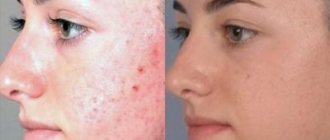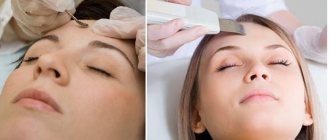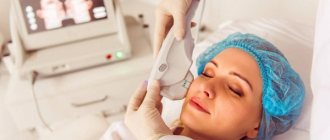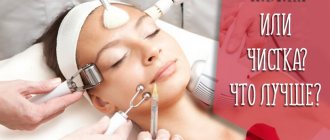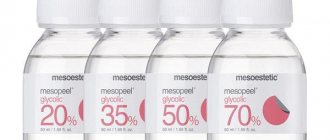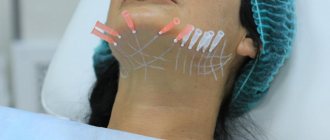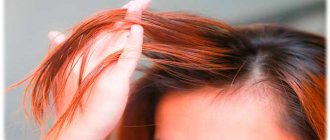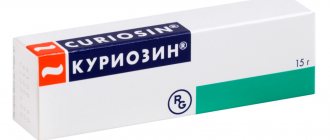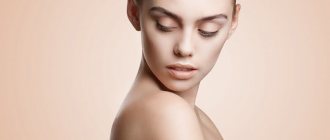Peeling – a face roll – is a special type of skin cleansing (exfoliation) from dead skin scales and various impurities. Since facial skin care requires a systematic approach, peeling can solve many problems: eliminate dead keratinized cells, which as a result prevents clogging of pores, skin inflammation and the development of acne. In addition, peeling - rolling improves complexion and gives it freshness.
What is a peeling roller?
Rolling is a type of peeling that uses not abrasive particles to cleanse the skin, but soft sticky substances that roll dirt, dead cells and sebum from the pores. These sticky substances only affect dead cells without affecting healthy ones. But at the same time, the roll has a soft and delicate effect even on dead cells. This product is suitable for all skin types, even sensitive and problematic.
Peeling - the sheet was invented in South Korea, so it is exclusively an Asian product. The principle of its operation consists of two stages:
- Dissolution of dead stratum corneum scales (keratinocytes) using fruit acids (lactic or salicylic).
- Absorption of split cells by cellulose molecules. Cellulose microparticles absorb dead cells and dirt, rolling them into small lumps.
The cosmetic product is applied to the skin and a product is rolled along massage lines, which absorbs all the dirt and dead cells. This product is very easy to use and has the same simplicity in its composition. When all the dirt and dust rolls into balls, mechanical cleansing of the facial skin occurs.
Features of rashes
Is it possible to exfoliate acne? The safety of this procedure depends on the stage of the disease. During the acute period, any active manipulation of the skin is fraught with additional complications. The fact is that acne is the result of an inflammatory process that involves pathogenic microorganisms. Therefore, any intense exposure will contribute to the spread of rashes.
Before starting a course of procedures, you first need to stop the inflammation. In this case, renewal of surface tissues will occur without the risk of infection, which will affect the speed of skin restoration and the visual manifestation of the result. An additional effect of the procedure will be to prepare the skin for the effects of special care or medicinal preparations. The freed pores will better absorb beneficial components, while the saturation of the cells will occur more intensely and deeply.
Why peel?
In our body, cells are renewed every minute. However, not all dead scales immediately leave our body. Sometimes, to get rid of them it is necessary to use mechanical methods of influence. This is exactly the task of peeling (exfoliation) - eliminating dead cells. If dead scales are not removed, they clog the pores and thus prevent sebum from coming out.
As a result, a plug forms, which over time becomes a blackhead, and then becomes inflamed, becoming a pimple or abscess. And only regular peeling can prevent the development of the above scenario. Also, regular exfoliation can preserve youth and prevent premature aging.
Why is the roller preferable among all peelings? Firstly, this procedure can be performed at home. Secondly, this type of peeling does not contain large abrasive particles, which often injure the delicate skin. This prevents the appearance of peeling, wounds, irritation and redness. Therefore, without risking anything, we get a wonderful result.
Thirdly, this product is affordable to the general public. Fourthly, the whole procedure takes about 10 minutes.
Definitions
Peeling is a cosmetic procedure that allows you to cleanse the skin of dead cells. Their life cycle is 28 days, after which they can clog pores, impairing metabolism and accelerating skin aging. Peeling also allows you to get rid of the effects of acne, age spots, scars or shallow scars. It promotes skin regeneration.
With the help of peeling, you can get rid of post-acne, which is a change in the skin as a result of the appearance of acne.
Factors such as:
- mechanical damage to the skin when squeezing out pimples;
- improper treatment of the disease;
- demodicosis;
- long course of the disease.
Post-acne manifests itself in the form of the following problems:
- skin texture disorders;
- scars;
- scars;
- enlarged pores;
- changes in skin color.
Benefits of the procedure
This procedure has many positive aspects. The main ones are:
- ease of use;
- cheapness of the product itself;
- safety;
- gentle and gentle effect on the skin;
- painlessness;
- lack of recovery period and long preparation;
- quick positive effect;
- no age restrictions;
- universality of the procedure (suitable for any skin type).
This procedure is especially suitable for those who do not have the financial means or means to visit an aesthetic clinic frequently. This is a simple and affordable procedure that gives 100% effect.
Unlike other cleansing products (scrubs), rollers do not contain aggressive abrasive components that injure dry, irritable and problematic skin. The product is atraumatic because it acts softly and delicately.
A gentle facial massage during peeling can:
- improve blood microcirculation;
- have a draining effect;
- activate cellular metabolism;
- speed up regeneration processes;
- eliminate stagnant processes.
In the décolleté area
Reason: clogged pores, improper care, hormonal disorders.
If you have skin problems in the décolleté area, then it is important not to mask the inflammation that has appeared, and especially not to cauterize it. Aggressive creams and foundations will most likely have the opposite effect. After all, the skin in this area is very delicate and sensitive. Therefore, a delicate approach is especially important here.
A massage procedure with liquid nitrogen can be called popular and non-traumatic. In 10 sessions, inflammation will disappear, the skin will become smooth and even. However, “nitrogen” massage may not always give pronounced results. Therefore, it is advisable to combine it with external treatment.
If your skin is inflamed, do not use “store-bought” scrubs under any circumstances. Solid particles from such products can increase irritation. It is better to do salicylic or glycolic peeling in the salon. With their help, you will cleanse and refresh your skin with minimal trauma to it. However, be prepared for the fact that the marks after cleaning will take quite a long time.
If you have blackheads on your chest, you can get rid of them with a homemade scrub. One of the best is the coffee option. To prepare it, add a little ground coffee to any low-fat cream. Apply the resulting mixture carefully, with light massaging movements.
Antibacterial lotions and gels can be used against inflammation. They should contain plant extracts of plantain, linden, tea tree, aloe, chamomile, and calendula. Together they will have a good anti-inflammatory and antimicrobial effect.
There is another good “quick beauty” product for the décolleté – camouflage pencils with a drying effect. Such products can be found in the Vichy, La Roche-Posay, Avene brand lines.
Indications and contraindications
In order for the effect not to take long, the procedure should be carried out correctly. Also, every person needs to be aware of the likely risks that may arise as a result of the procedure. Knowing and taking into account contraindications for the procedure, you can avoid many unpleasant moments and prevent the development of side effects.
Thus, the procedure is contraindicated in the presence of:
- open wounds and burns on the face;
- allergic reactions or inflammation on the face;
- rosacea and rosacea;
- spider veins (telangiectasia);
- individual intolerance to the components of the product;
- very dry and very loose skin.
Before exfoliation, it is necessary to conduct a test: to do this, apply a little product to the inner curve of the skin of the elbow and gently massage the area. If there is an individual intolerance or an allergic reaction, the skin becomes very red and itchy.
The procedure is indicated for:
- early wrinkles and early withering of the skin;
- the presence of facial wrinkles;
- poor dull complexion;
- the presence of marks, scars and acne scars;
- excessive sebum production;
- oily shine on the face;
- if the skin is thin, dotted with vessels;
- irritation and peeling;
- acne, pimples and acne.
On a note
In the fight against inflammation in the body, we are ready to use any means. But not every method can have a positive effect.
MYTH: A tanning bed will help with back acne.
Ultraviolet radiation only masks inflammation and gives an “instant” drying effect. At the same time, it reduces the skin’s immunity and, as a rule, after 1–2 weeks the situation worsens. The same applies to tanning in the sun.
TRUTH: To get rid of inflammation on the body, you need to take vitamins.
Vitamin complexes can really help in the fight against “minor troubles” on the body. It is desirable that the composition contains vitamins B, A and E.
How to use peeling roll for face
Using these cosmetics is very easy.
In order to follow the sequence of the procedure, you must follow the following algorithm:
- Cleanse the skin with your usual care products. Wash your face and pat it dry.
- Apply the required amount of product to a cleansed face, distribute it evenly over the face, avoiding the areas around the eyes and lips.
- Leave the cosmetic product on your face for 2-3 minutes.
- Use your fingertips to gently massage the skin along the massage lines for 1-2 minutes. You need to act gently and delicately, without pressing hard on the skin, without stretching or injuring it. Pay special attention to the T-zone. Roll the mask until small lumps form under your fingers.
- Carefully rinse off all pellets with warm water.
- Proceed to other stages of care (use toner, apply moisturizing and nourishing cream).
With regular use of the product, the following is observed:
- cleansing and tightening pores;
- improvement of facial relief;
- elimination of pigment spots;
- face brightening;
- the skin becomes fresh, soft and healthy.
You can use the rolls even if you have skin pathologies (acne, rosacea, rosacea) because they are so delicate and gentle.
Skin care after
Special care and gentle handling will help speed up the process of skin regeneration after deep cleaning. The result of the main procedure will depend on the accuracy of following the specialist’s recommendations at the rehabilitation stage. In other words, it is impossible to determine whether peeling helps with acne until the cleaned areas of the epidermis are completely restored.
To avoid negative consequences, it is important:
- Protect skin from exposure to ultraviolet rays.
- Clean the treated skin surface with gentle neutral gels or foams.
- Do not touch your face with your hands unless absolutely necessary.
- Do not remove crusts or keratinized particles that appear after peeling on your own.
- Do not visit the swimming pool, sauna or solarium for at least four weeks.
You may need to refrain from using foundation or other decorative cosmetics for two to three weeks after acne peeling. In cases where the cleansing procedure has affected the deeper layers of the skin, this period can be extended to several months.
DOES PEELING HELP ACNE?
First, let's figure out what the 3 main types of acne (which are scientifically called by the general term “blackheads” or “acne”):
- Comedones (blackheads);
- Pustules (pustules-inflammations);
- Papules (“nodules” protruding above the skin).
Indirectly, acne spots (post-acne) can also be included in these categories.
All these imperfections are very unpleasant, and the prospect of peeling off the top layer of horn cells along with all the problems looks very attractive.
This is precisely the meaning of peeling - a procedure that, due to controlled stress on the skin (for example, an acid-based drug), triggers the regeneration process in tissues. As a result, collagen and elastin fibers are naturally renewed, and, depending on the depth of the intervention, different numbers of layers of skin can be exfoliated.
Causes of acne formation
However, you should remember: treating acne with peelings is not always a panacea. Some inflammations occur due to internal disorders in the body (infections, hormonal imbalance, chronic diseases). Such cases may require prior treatment with medications:
- Irregular care: sebaceous plugs appear;
- Increased activity of the sebaceous glands;
- Heredity;
- Long-term exposure to chlorine;
- Taking steroids or halogen-containing (antiseptic) agents;
- Inflammation in areas of ingrown hairs;
- Allergy;
- Infections in wound sites;
- Hormonal changes;
- Intestinal disorders;
- Subcutaneous mite.
CAUTION: CONTRAINDICATIONS!
With fresh purulent inflammations or recently squeezed out (bleeding) pimples, peeling is strictly prohibited! A burn will appear in this place!
In addition, foci of infection can spread to healthy tissue, so fresh rashes must first be treated!
The remaining contraindications are standard: it is forbidden to do peeling with a fresh tan, against the background of a weakened immune system, or if you are allergic to the components of the exfoliant.
Only a specialist can prescribe the correct method in each individual case, because self-diagnosis or unprofessionalism are fraught with post-peeling complications.
CAUTION: PARASITES!
If acne is caused by demodicosis (subcutaneous parasites), peeling will only make the situation worse!
Briefly, indications and contraindications for treating acne with peelings can be formulated in the following table:
| IT IS FORBIDDEN | CAN |
|
|
The principle of action here is this: inflammation is caused by bacteria, and their activity can be reduced if you regularly (every month) exfoliate dead horn cells. Deprived of their usual nutrient medium, the bacteria die.
Laser removal of acne on the face
Fractional laser treatment of acne and post-acne is a local effect on damaged areas of the skin with a fractional laser. Fractional laser is a special laser beam divided into many small and very thin laser beams. Each of these rays penetrates to the required depth of the skin and evens out the skin texture and narrows the pores. The procedure takes place within 15 – 20 minutes. After the procedure, slight redness is observed, which quickly disappears. After the procedure, you should use a moisturizer in your home care.
Laser acne treatment is a procedure that completely evens out the color and texture of the skin, removes unevenness in the form of scars, enlarged pores and “stagnant” spots after acne. One procedure is enough to get rid of blackheads, normalize oiliness, improve the quality and color of the skin, and eliminate rashes.
Laser acne treatment results are one of the popular acne treatment methods. Today, a laser for the treatment of acne is used in medical cosmetology to treat all types of acne and to eliminate serious consequences: post-acne scars, uneven relief, restoration of facial and body skin color. Laser acne treatment is a method of hardware cosmetology. It does not cause allergies or irritation. The laser method of treating acne has been used in medicine and cosmetology for more than 40 years, and almost every manufacturer of cosmetology equipment is creating new technologies for laser treatment of acne. The Global Beauty clinic uses fractional ablative laser technology designed to treat the skin and eliminate all the consequences of acne.
The use of laser treatment for acne has a long history and resulting experience. Laser treatment for acne began to be used as soon as it appeared in medicine. At first, it was used only for the treatment of active forms of acne, in the stage of presence of open and closed comedones, papules, pustules on the skin - these are various types of acne, and a little later the need began to clearly emerge in finding a method that could eliminate the consequences - post-acne scars, stagnant spots and pigmentation, small vascular dots, spots and stars.
CHEMICAL METHODS AVAILABLE AT HOME
The most popular chemical peel for acne is enzymatic, or enzymatic: it is delicate, acts quickly and causes minimal harm. This is explained by the gentle composition: the enzymes contain natural acids of low concentration (obtained from apples, grapes, pumpkin, etc.).
More intense acid types of exfoliation are no less effective in combating rashes: they trigger natural recovery mechanisms in the skin and are also quite often prescribed by cosmetologists.
Salons also offer a special “acne peeling”: it contains keratolytic components (“exfoliators”), as well as antiseborrheic substances (against skin “dandruff”). As a result of a course of such procedures, the skin smoothes and becomes velvety to the touch, and the complexion improves.
Glycolic
A cosmetic treatment based on an acid derived from beets or sugar cane helps rejuvenate and brighten the skin and clear sebum from pores. After several sessions, the face looks well-groomed and refreshed.
Attention: due to the acceleration of metabolism in tissues after peeling, pimples may become temporarily active (but this will pass soon)!
Retinoic
Yellow exfoliation is carried out on the basis of drugs that are essentially similar to vitamin A. The result is an antiseptic effect; tissues are simultaneously moisturized, healed and rejuvenated.
This procedure often requires a preparatory period of up to 2 weeks.
Ferulic
Ferulic acid works well against acne on all skin types and also has excellent antioxidant effects. With this technique you don’t have to worry about swelling or skin irritation.
Trichloroacetic
This anti-acne peeling is a fairly radical measure and is used locally, mainly to treat acne scars and only if there are no active inflammatory processes. This technique has many contraindications and should be used with caution (mainly in salons, at home - up to a maximum of 10% acid concentration and only in consultation with a cosmetologist!).
Salicylic
The salicylic exfoliation method is based on beta-hydroxy acid, also found in aspirin. It dissolves sebum well, penetrates deeply into the glands, and dissolves blackheads. In modern cosmetics, it is most often used in combination with other softening components or as a preparation for mechanical cleaning.
Almond
Mandelic aha acid (alpha hydroxy acid) acts like the antibiotic erythromycin: it has a powerful antibacterial effect. Indicated for oily skin with comedones in the form of a gel, and in the presence of a large number of inflammations, it is recommended in the form of a lotion.
Amber
This peeling for acne involves the use of a composition based on succinic acid in combination with other active ingredients (lactic, glycolic, tartaric and other acids). It is more often used in older age and helps not only stimulate the epidermis to produce natural collagen and elastin fibers, but also whiten the skin.
So, to summarize:
